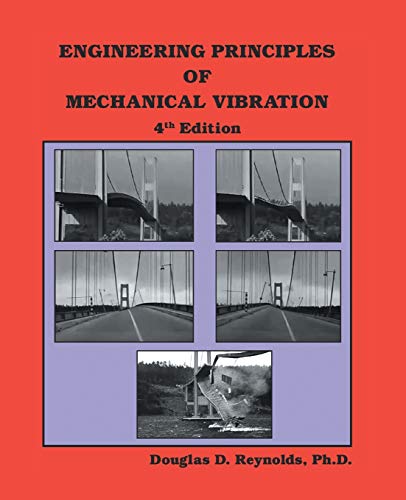Engineering Principles of Mechanical Vibration
4th Edition
Douglas D. Reynolds
BOOK REVIEW

Vibrations can be both a fascinating subject and a complex challenge in the field of engineering. Engineering Principles of Mechanical Vibration by Douglas D. Reynolds dives into this intricate world, blending theoretical insights with practical applications in a way that is both enlightening and exhilarating. From its pages, one can feel a pulse-a rhythmic dance of mechanical components, much like the vibrations that often escape our notice in daily life. This isn't just a book; it's a journey into understanding how these forces shape everything around us.
Reynolds, an accomplished engineer and educator, meticulously guides readers through a spectrum of mechanical vibration principles that resonate beyond textbooks and lecture halls. His work is not merely an academic exercise; it's a crucial tool for engineers who dare to unravel the mysteries of machinery and structural dynamics. The author's passion for these principles bubbles to the surface, igniting a flame of curiosity in readers, encouraging them to look beyond the surface to grasp the vibrational phenomena that surround us.
As one immerses in this well-structured text, they will encounter a rich tapestry woven with deep insights-a tapestry that proves beneficial not only for students of engineering but also for seasoned professionals. The illustrated nature of the text enhances comprehension, allowing complex theoretical concepts to become tangible, transforming abstract theories into something you can almost feel vibrating in your hands. Readers have remarked that Reynolds has a knack for breaking down daunting material into digestible segments, making even the most arcane ideas accessible.
However, this work is not without its critiques. While many praise its clarity and the comprehensive coverage of vibration theory, some argue that certain sections could benefit from deeper exploration or modern examples. The balance between theoretical principles and real-world applications left a few readers yearning for more contemporary scenarios and case studies to ground their learning. Yet, is this not the essence of academic writing? The tension between rigid theory and fluid practice challenges readers to fill in the gaps with their experience, to synthesize knowledge uniquely.
In the context of its publication in 2013, this book contributes to ongoing discussions about the importance of vibrations in structural integrity-hot topics in fields ranging from aerospace to civil engineering. The deficits in understanding vibrations have led to costly engineering failures in history, and this text serves as a clarion call for the importance of rigorous training in these fundamental concepts.
As you navigate through Reynolds' profound insights, consider the broader implications of vibration control. Industrial machinery, transportation systems, even the buildings we inhabit-all dance to the unseen tunes of vibration. The principles discussed here are not limited to academic exercises; they inform decisions that affect our daily lives, safety, and efficiency.
In a world increasingly driven by technology and innovation, Engineering Principles of Mechanical Vibration is a crucial read that bridges the gap between theory and practice. Whether you're an aspiring engineer wanting to grasp foundational concepts or a professional seeking to refresh your knowledge, Reynolds invites you to feel the vibrations of knowledge that echo throughout this remarkable work. Don't let the opportunity to engage with these principles pass you by-delve into the book and let the rhythmic understanding of vibrations transform your perspective on engineering.
📖 Engineering Principles of Mechanical Vibration: 4th Edition
✍ by Douglas D. Reynolds
🧾 484 pages
2013
#engineering #principles #mechanical #vibration #edition #douglas #reynolds #DouglasDReynolds